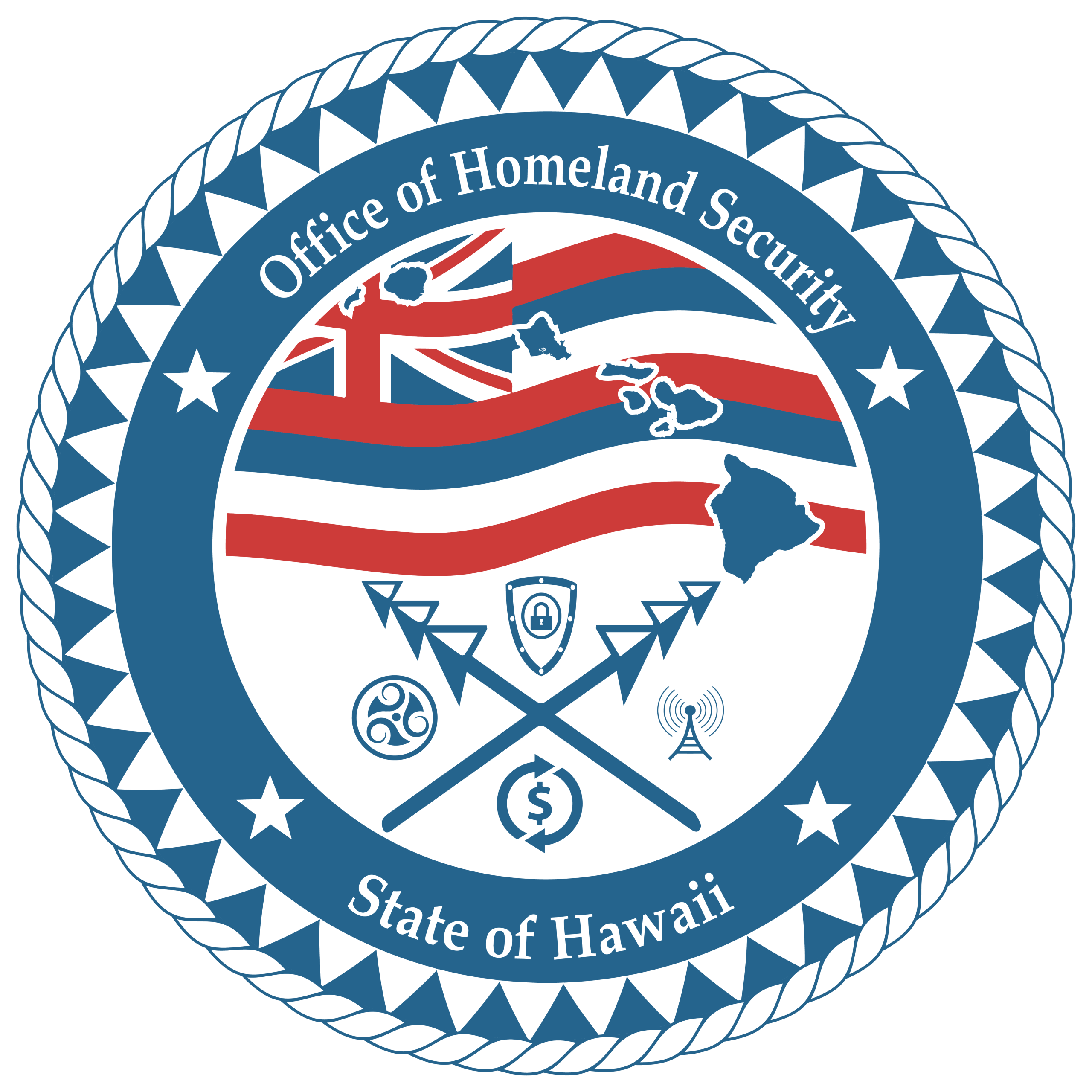Office of Homeland Security Home Page
Working to Keep Hawai‘i Safe
Our Mission: Resolutely safeguard the people of Hawai‘i, our community values, and our homeland.
Our Purpose: Protect and secure the State of Hawai‘i; provide for its safety against threats.

Values
Unity: Harmonize efforts for the benefit of all who live in, serve, and visit Hawai‘i.
Honor: Demonstrate honesty, integrity, fairness, and credibility in everyday actions.
Vigilance: Always aware, alert, and prepared to face new challenges and threats.
Resilience: Withstand, recover, and overcome challenges to our security.
Vision
A Hawai‘i that is safeguarded against threats to security, stability, and resiliency.

OHS has multiple avenues for community involvement, engagement, and learning. Community members across all islands are a vital component to identifying and preventing terrorism within the state of Hawai‘i. Use the buttons below to learn more.
Check back soon for new career opportunities.
The Hawai‘i Office of Homeland Security and the Hawai‘i State Fusion Center often host in-person forums and symposiums on O‘ahu, covering topics like Critical Infrastructure, Homeland Security, and Targeted Violence Prevention.
For training and professional development opportunities, see the ‘upcoming events’ listed below.
News Archive
Federal Executive Branch Agencies Roles and Responsibilities in United States Elections
Have you ever wondered how the federal and state governments work together during federal elections? The Department of Homeland Security (DHS) has put together a fact sheet with that information. Here’s a preview from the sheet: Federal Executive Branch Agencies…
Read More Federal Executive Branch Agencies Roles and Responsibilities in United States ElectionsCISA Release: Cybersecurity Resources for Civil Society Communities
WASHINGTON – The Cybersecurity and Infrastructure Security Agency (CISA) announces a new dedicated High-Risk Communities webpage today with cybersecurity resources for civil society communities at heightened risk of facing digital security threats because of their work. Through the Joint Cyber Defense…
Read More CISA Release: Cybersecurity Resources for Civil Society CommunitiesNSA Releases Maturity Guidance for the Zero Trust Network and Environment Pillar
The NSA has released a Cybersecurity Information Sheet, Advancing Zero Trust Maturity Throughout the Network and Environmental Pillar, that details curtailing adversarial lateral movement within an organization’s network to access sensitive data and critical systems. The guidance provides information on how…
Read More NSA Releases Maturity Guidance for the Zero Trust Network and Environment PillarNSA Releases Top Ten Cloud Security Mitigation Strategies
Last week, the National Security Agency (NSA), in partnership with CISA, released Top Ten Cloud Security Mitigation Strategies to inform cloud customers about important security practices as they shift their data to cloud environments. Read the press release here.
Read More NSA Releases Top Ten Cloud Security Mitigation StrategiesODNI Releases 2024 Annual Threat Assessment of the U.S. Intelligence Community
Today, the Office of the Director of National Intelligence released the 2024 Annual Threat Assessment of the U.S. Intelligence Community. This unclassified assessment provides a report of worldwide threats to the U.S. national security and reflects the intelligence community’s collective insights.
Read More ODNI Releases 2024 Annual Threat Assessment of the U.S. Intelligence CommunityDHS Releases Physical Security Performance Goals for Faith-Based Communities
As the conflict in the Middle East continues, the state’s Office of Homeland Security is working diligently to ensure that Hawai‘i’s faith-based communities and organizations have access to resources to support safety measures. See the following release from the U.S….
Read More DHS Releases Physical Security Performance Goals for Faith-Based Communities